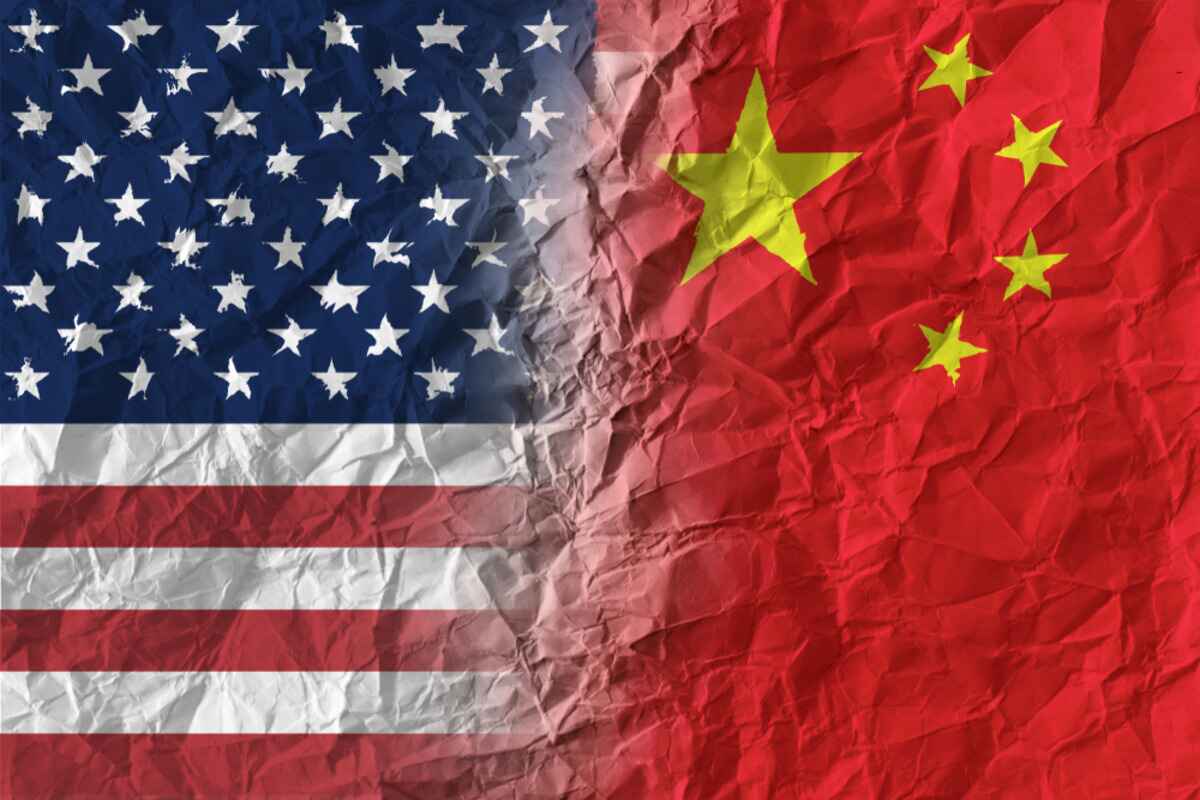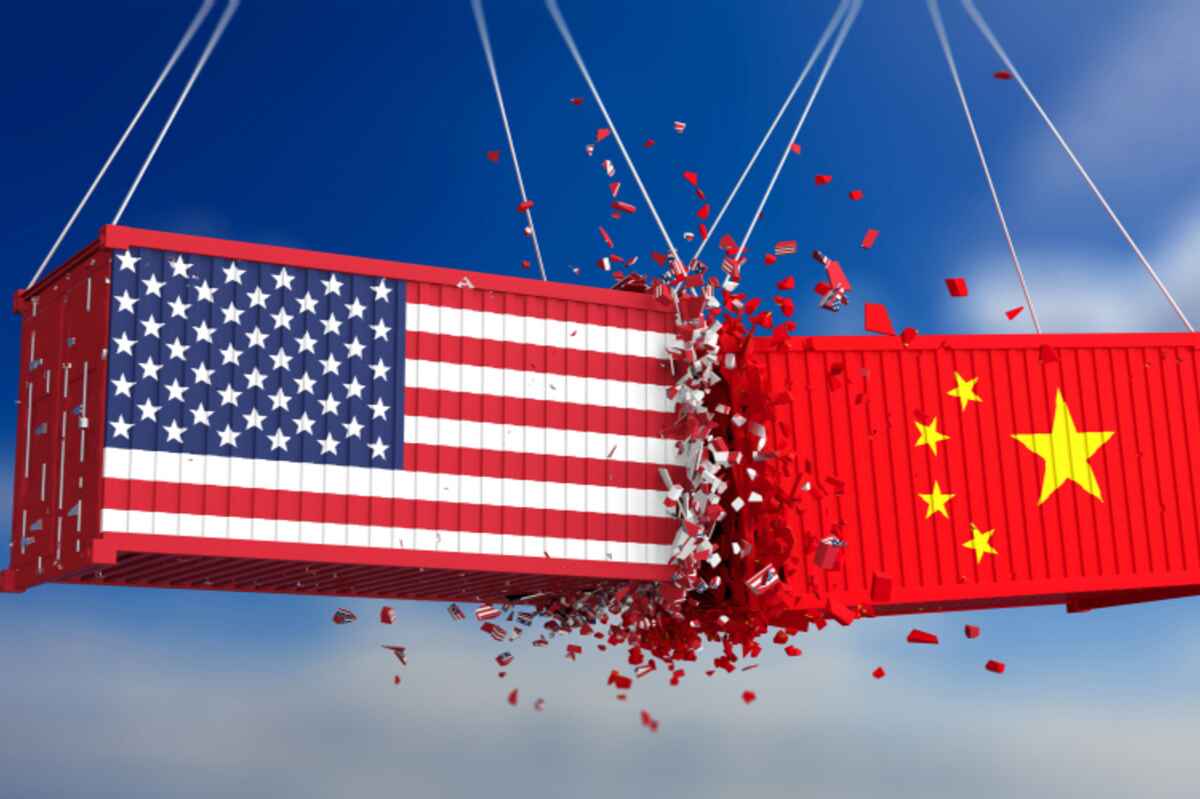The United States has announced that 104 percent duties on imports from China will come into effect on Wednesday. This decision coincides with President Donald Trump’s administration moving swiftly to initiate discussions with other trading partners affected by extensive tariffs.
Stocks plunge amid tariff announcement
U.S. stocks have experienced a downturn for a fourth consecutive trading day since the announcement of U.S. tariffs last week. The S&P 500 index closed below 5,000 for the first time in nearly a year, marking an 18.9 percent decline from its recent high on February 19, approaching the 20 percent threshold that signifies a bear market.
Major stock indexes experienced a sharp decline in Asia on Wednesday following the implementation of the U.S. tariffs on China. This situation was exacerbated by a significant selloff in Treasuries, raising concerns that foreign investments were pulling away from U.S. assets.
U.S. dollar and yuan react to trade tensions
The U.S. dollar weakened against safe-haven currencies; however, the onshore yuan remained just above its lowest level since late 2007 as Beijing allowed the currency to depreciate further in response to the escalating trade war with the U.S.
Widespread market impact
Few assets were immune to the recession fears permeating the markets, with oil prices plunging nearly 4 percent. The repercussions are expected to extend into Europe, with EUROSTOXX 50 futures indicating a 3.7 percent drop at the market open. Both S&P 500 futures and Nasdaq futures fell by 1.6 percent.
Significant losses for S&P 500 companies
The shifting narratives surrounding tariffs and the looming threat of a prolonged trade war between the world’s two largest economies ignited significant volatility in financial markets. Since U.S. tariff announcement last Wednesday, S&P 500 companies have seen a loss of $5.8 trillion in stock market value. This represents the most significant four-day loss since the benchmark was established in the 1950s, according to data from LSEG.
Global markets react to tariff fears
Global markets had previously shown signs of recovery, buoyed by hopes that Trump might be inclined to negotiate the various country and product-specific trade barriers he is imposing around the world’s largest consumer market. However, Japan’s Nikkei experienced a widespread sell-off on Wednesday morning, with other Asian markets bracing for declines just hours ahead of the tariffs taking effect.
Upcoming trade talks with key allies
The administration has planned discussions with South Korea and Japan, two crucial allies and major trading partners. Additionally, Italian Prime Minister Giorgia Meloni is expected to visit next week to engage in talks.
“These are tailored, highly tailored deals,” Trump remarked during a White House event where he signed executive orders aimed at boosting coal production. “We’ve had talks with many, many countries, over 70; they all want to come in. Our problem is, we can’t see that many that fast.”
Country-specific tariffs set to launch
Despite ongoing negotiations, the White House clarified that country-specific tariffs of up to 50 percent would indeed take effect at 12:01 a.m. Eastern Time (04:01 GMT), as previously planned, according to Reuters. These tariffs will be particularly severe for China, with Trump escalating duties on its imports to 104 percent in retaliation for countertariffs that Beijing announced last week. China has rejected what it deems blackmail and has vowed to resist until the end.
Administration’s stance on negotiations
Administration officials have indicated that they will not prioritize negotiations with the world’s second-largest economic power, China. In an evening address to Republican lawmakers, Trump stated he would soon unveil “major” tariffs on pharmaceutical imports, asserting that these duties would incentivize drug companies to shift manufacturing operations to the U.S.

Fears of recession amid tariff uncertainty
The U.S. sweeping tariffs have sparked concerns about a potential recession and disrupted a global trading framework that has existed for decades. China is preparing for a prolonged economic confrontation, with manufacturers expressing worries about profit margins and scrambling to devise plans for new overseas facilities. In light of escalating external risks, Citi has revised its 2025 China GDP growth forecast down to 4.2 percent from 4.7 percent.
Canada’s response to U.S. tariffs
Canadian Prime Minister Mark Carney announced that his country’s 25 percent tariff on certain vehicles—a retaliatory measure in line with Trump’s approach—will take effect immediately after midnight. “President Trump caused this trade crisis—and Canada is responding with purpose and with force,” Carney stated on X.
While Canada and Mexico were exempt from the latest round of tariffs announced by Trump last week, previous levies remain in effect. Most goods adhering to the existing trade agreement among the three nations will not be subject to these tariffs.








